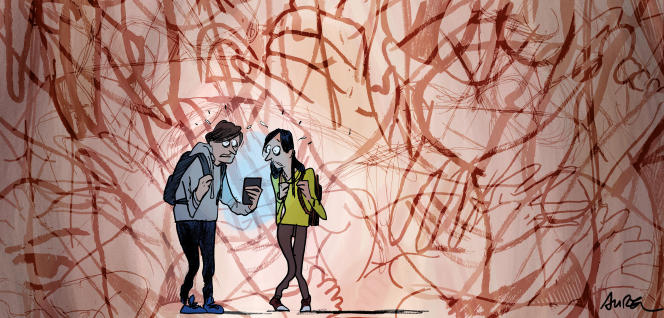“But Madame, should I do what I saw?” Is this what the boys expect of me? » Since she started talking about sexuality with young people in 2017 – the year she graduated – Valérie Froc, marriage and family counselor in Toulon, only counts questions of this type from teenagers, often “more talkative” that teenagers, she says, may have asked her. Questions making him “clearly” understand that viewing pornographic content is ” frequent “ And “leaves traces”.
Her field of observation is vast: Valérie Froc intervenes in a sexual health center, in a hospital, in a medical-educational institute, in schools… And, more and more often, also, in primary school.
“When I started to do affective education, it was mainly high school and college students who seemed to me to be concerned, she reports. In five years, I have clearly seen the involvement of increasingly young audiences. I can be facing a class of CM2 and see that at least half have already been exposed to porn images. They say it in their own words: “It’s disgusting” , “I am ashamed…”. My experience is empirical, she would like to point out, but I think it is not isolated. »
Associations, school nurses, psychotherapists, teachers, doctors… are well placed to testify to a phenomenon that worries them and on which the Regulatory Authority for Audiovisual and Digital Communication (Arcom) has just made an edifying quantified diagnosis.
Three diagnoses in one, even: “Not only is the exposure of minors to pornography massive, but it has increased sharply in recent years and is affecting adolescents even younger than you might think”summarizes Laurence Pécaut-Rivolier, president of the Arcom working group on the protection of the public.
The majority on the smartphone
In detail, 2.3 million minors – almost a third – consult X sites each month, according to the study commissioned from Médiamétrie and carried out, in 2022, among 25,000 people. First observation: the proportion of 11-17 year olds concerned (30%) is barely lower than that of adults (37%). Another figure put forward by Arcom: 600,000 more (+9%) have been exposed to it since the fall of 2017, when the survey began to be carried out on three media (computer, smartphone , Tablet). Over the same period, adult attendance remained stable.
You have 79.97% of this article left to read. The following is for subscribers only.
